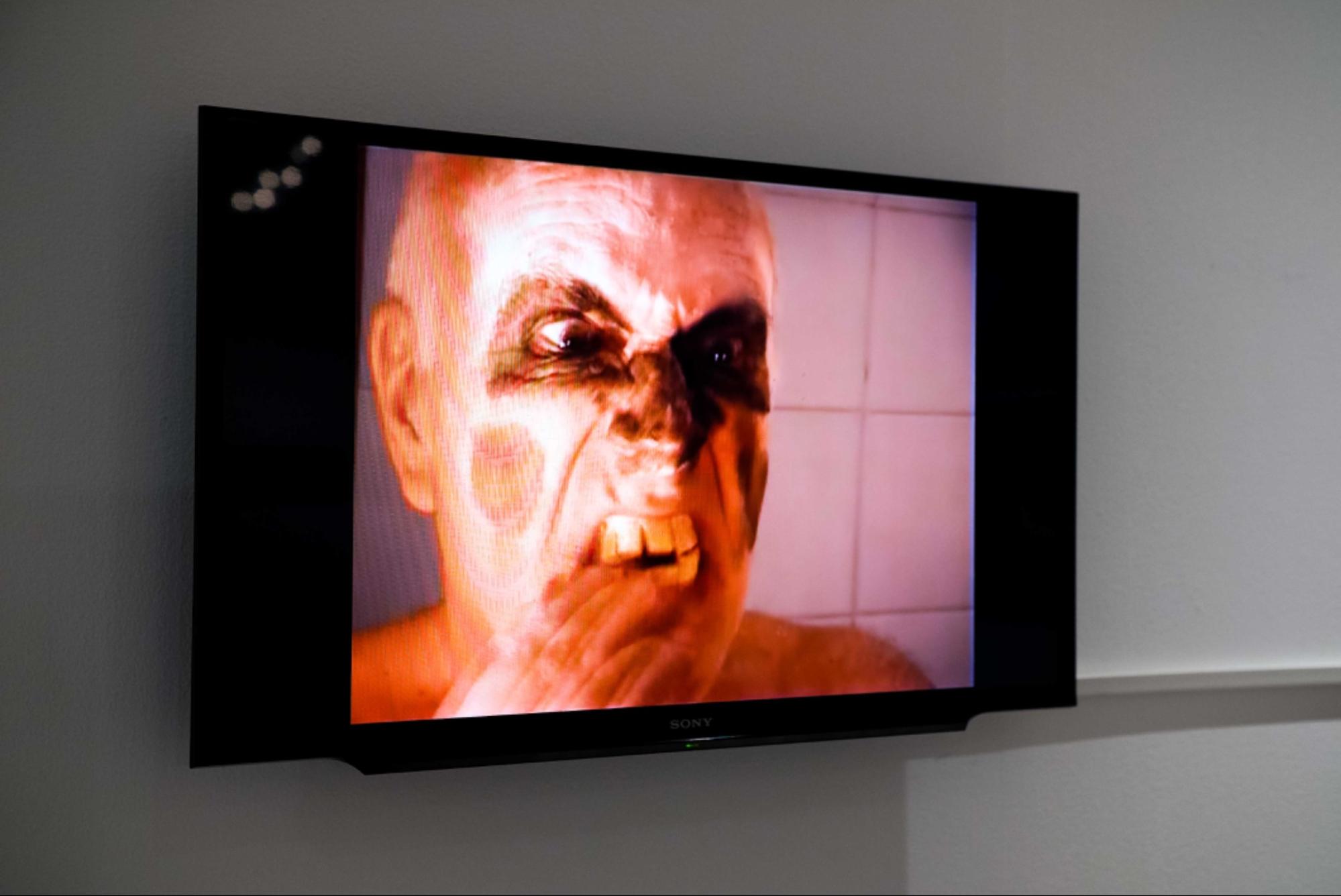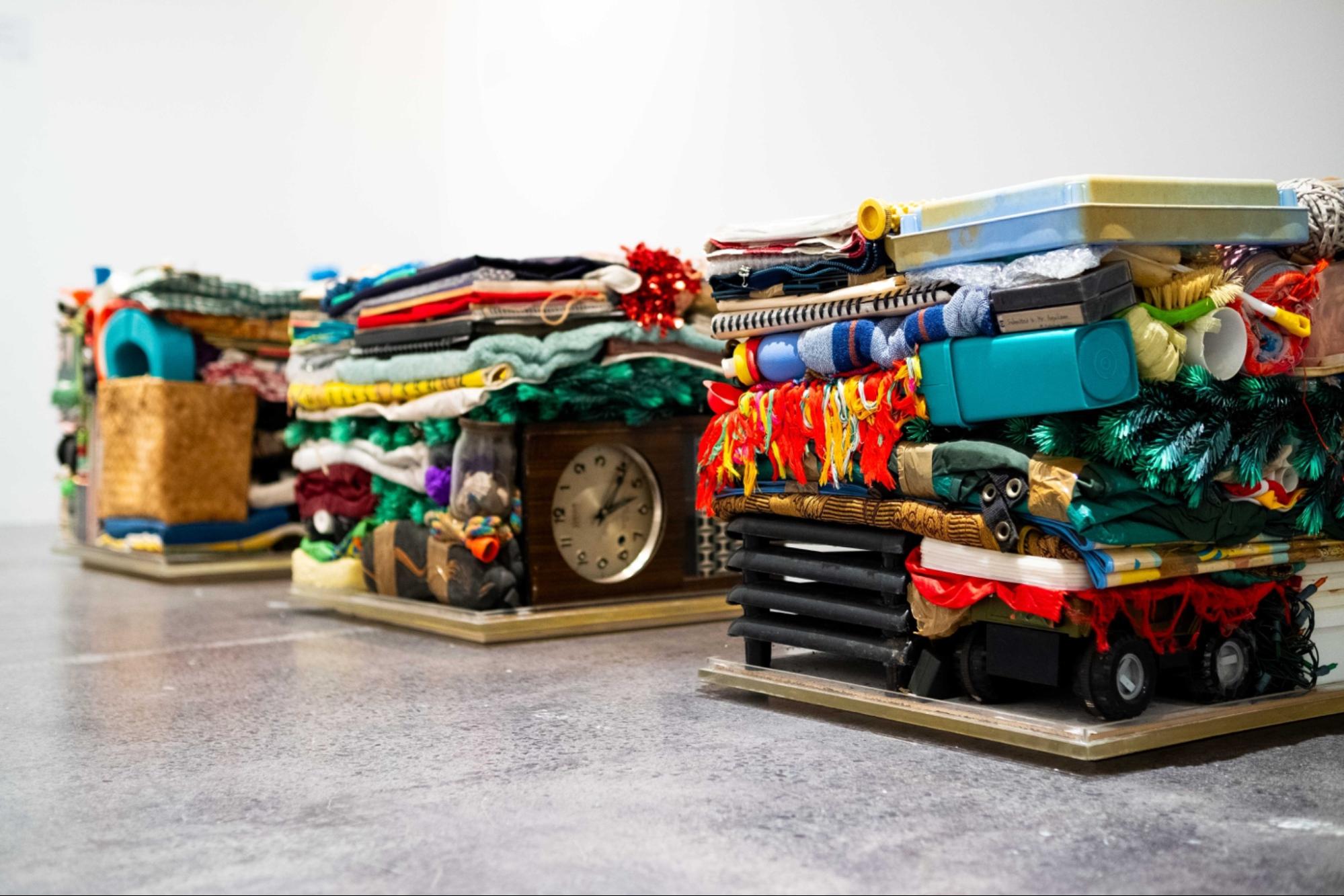Shows
The Uncanny and Unhomely in “Project Belonging: From There to Here”

Project Belonging: From There to Here. Part 1: The Foreign in the Familiar
Ateneo Art Gallery
Manila
August 10–October 26
A sharp, distorted cackling—as though ripped directly from some arcane tape—rattled from deep inside the gallery. Such strange, surreal instances permeated “Project Belonging: From There to Here,” at Ateneo Art Gallery curated by Spain-based Filipino curator Kristine Guzmán. Its first segment, “The Foreign in the Familiar,” spotlighted Spanish visual artist Enrique Marty, whose oeuvre spans grotesque puppetry and stop-motion animations to sculptures and paintings, ranging in an expression that is at once playful, dark, and ordinary. Throughout his artworks, surreal horror intertwines with psychological insight, reflecting Marty’s worldview—a mindscape loaded with dreams and memories, where fleeting moments nevertheless influence our sense of self.
Across “Project Belonging,” Marty’s collaged images and looped videos drew on an extensive investigation of the domestic and familial. These works were animated by a reverberant tension that felt peculiarly familiar, as our intimate memories were returned to us in a distorted form. Here, the settings and customs of childhood and domestic life—sleepovers, family vacations to the beach, washing dishes—took on a new life in Marty’s uncanny works.

Installation view of ENRIQUE MARTY’s Monster father, 2003, video: 3 min 29 sec. Courtesy Ateneo Art Gallery, Manila.
In Marty’s videos Holy mother (1998/2011) and Monster father (2003), which were framed side by side, the footage depicts the titular characters amid a routine. Holy mother, a three-minute video about a maternal figure, depicts her ironing a long stretch of fabric dangling from the ceiling in one scene, and bizarrely smashing a stack of plates in a sink in another. Monster father, meanwhile, features a timelapse of a paternal figure creating a monstrous visage using black and white powders and a set of fake crooked teeth.
Alluding to the concept of the “uncanny,” Sigmund Freud wrote in his 1919 essay on the subject that it “is in reality nothing new or alien, but something which is familiar and old-established in the mind and which has become alienated from it only through the process of repression.” Marty understands, like Freud, that the power of the uncanny emanates from its doubleness—both Holy mother and Monster father are capable of breaking through contradictions between the real and unreal, the present and ghostly, the homely and unhomely.
In his exhibited paintings, Marty traversed horror in domestic spaces, like childhood bedrooms in the Vergüenza, humillación series (1997), as well as family figures in his Superwoman series (1995–2008), a set of oil-on-board pieces depicting a woman contorted across various scenes. Throughout the Vergüenza, humillación series, the artist incorporates imagery like traces of blood, chalk outlines of a body on the floor, and a woman dozing into oblivion, bringing together allusions of violence, death, and absence onto the canvases.
.%20Courtesy%20Ateneo%20Art%20Gallery.jpg)
Installation view of ISABEL AND ALFREDO AQUILIZAN’s Project Belonging: In transit, 2006, mixed media of personal belongings, dimensions variable, at Ateneo Art Gallery, Manila, 2024. Courtesy Ateneo Art Gallery.
In addition to Marty’s elaborate and uncanny stagings of familial trauma, we were also introduced to a series of installations by Isabel and Alfredo Aquilizan, the Filipino artist couple whose collaborations dwell on the family not as a frightful, psychological experiment but a network that connects country, community, and material. Consisting of personal belongings and ephemera such as books, clothes, receipts, cables, shoes, and more, Project Belonging: In transit (2006), the mixed-media installation by the Aquilizans, shapes these objects into a cube formation, reimagining this miscellany packed tightly amid a web of household objects.
If Marty’s notion of the uncanny draws on the more explicit connections to horror and repression, the Aquilizans explore its postcolonial link: how do we feel at home inside a pervasive world of unhomeliness? And what does this experience of unhomeliness do for Filipino migrants? These lingering questions will perhaps receive a more fruitful exploration in the next half of the exhibition in November, wherein the thematic preoccupations will be inverted, showcasing the “familiar in the foreign” instead. In the meantime, we are left to ponder Marty’s domestic horror scenes, whose vibrant universe has at least illuminated a crooked yet compelling path.
Sean Carballo is an arts writer based in the Philippines. His writing has been published in Cartellino, Plural Art Mag, and Heights.







